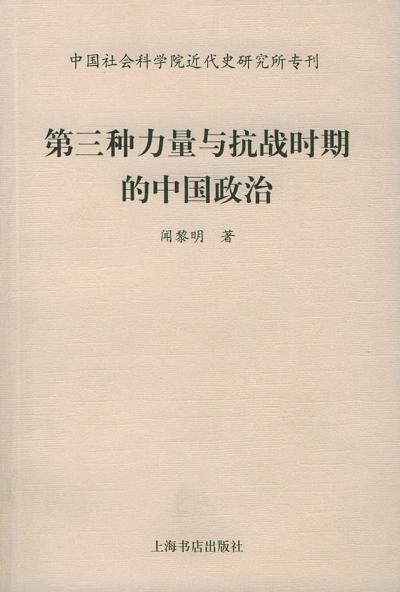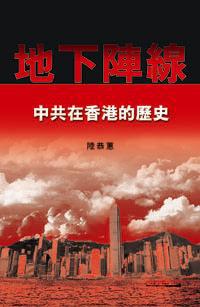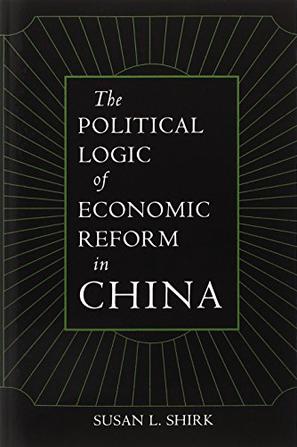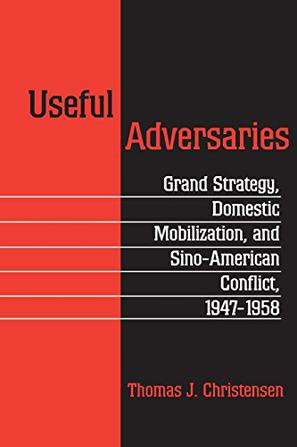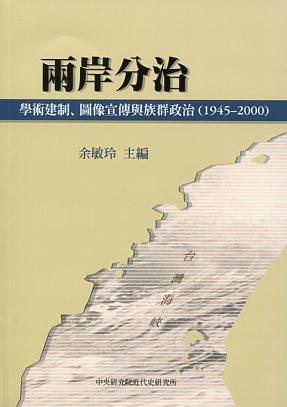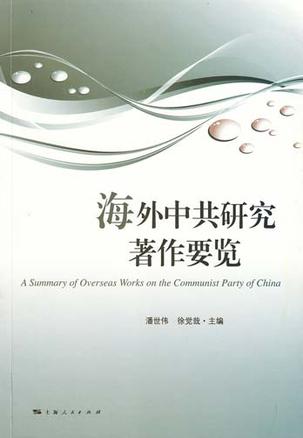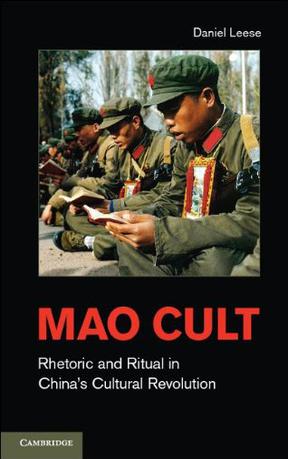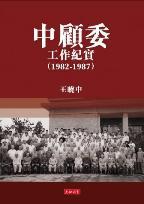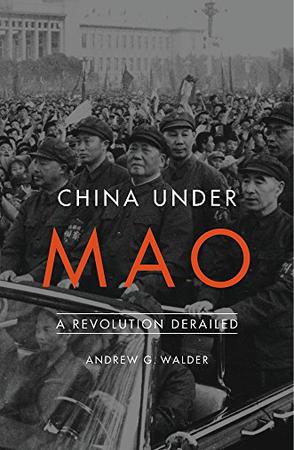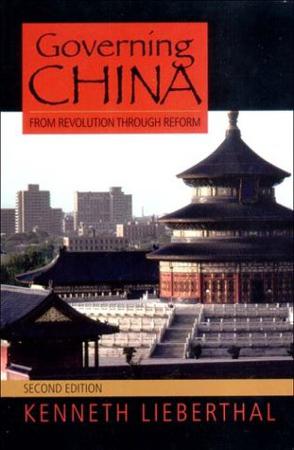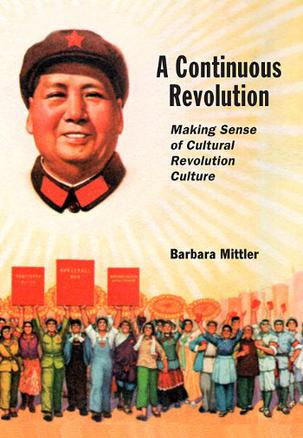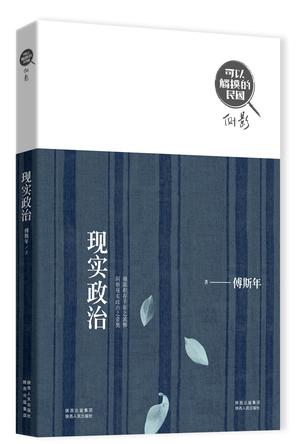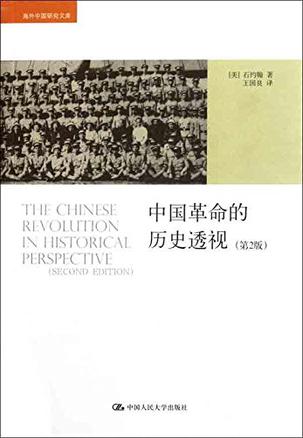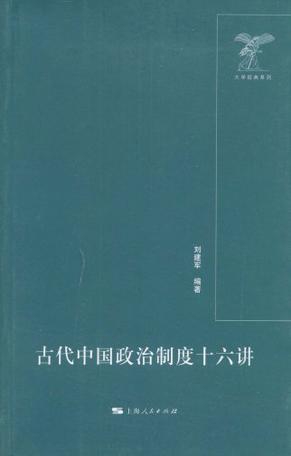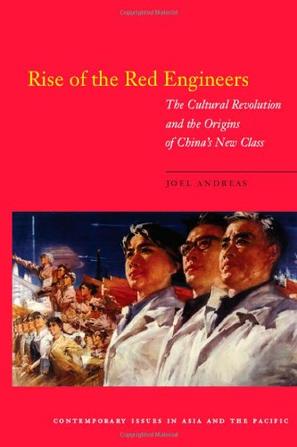欢迎来到相识电子书!
标签:中国政治
-
第三种力量与抗战时期的中国政治
本书为“中国社会科学院近代史研究所专刊“2004年总第二辑之一种,由张海鹏先生着意为序热心介绍。全书旨在考察抗战时期处于国共两大政党之间之第三种力量(或称中间势力)的存在状况,是以宽泛的视野、丰富的资料,对其社会基础、阶层构成、党派组织以及在当时形势下它的政治态度、立场倾向、策略主张、行为活动等作了一次全景式的问题论述。笔力所及,既是对以往研究的薄弱部分予以加强与深化,更是对相关问题的独立思考之所见,通览之下,能使人们对于那一时期的中国政治及国共势力消长原因等会是更深刻的了解与认识。 -
地下陣線
《地下陣線:中共在香港的歷史》是首部研究中國共產黨自1921年建黨以來在香港發揮作用的著作。本書記述最近有關中共的事件,其中包括一項香港市民對共產黨所持態度的民意調查結果。附錄中臚列許多與共產黨統戰活動有關的資料,有助讀者深入瞭解中共在香港的歷史。本書適合所有對香港歷史、政治,以及中國現代史感興趣的讀者。 -
香港治與亂
解析了香港政治之所以走入當前困局的心理、社會、政治和歷史脈絡,這包括:香港社會對於「一國兩制」方針所存在的觀念偏差和在國家政治認同方面所面臨的困難處境,「港人治港」投入實踐之後所面臨的政治隱憂,以及 在高度自治原則下,作為中國的特殊政治邊陲,香港在管治上面臨的結構性困難。 當五十年不變的期限來臨之際,2047年的香港何去何從,將直接取決於接下來的二三十年間,中央政府與香港社會之間是否能夠重建政治信任。 本書作者畢業於北京大學和哈佛大學,現任教於香港大學,兼具政治學者和中國年輕一代知識菁英的雙重身份,以其理性和敏銳的筆觸,為所有關懷香港未來的人打開全新的政治想像空間。 -
The Political Logic of Economic Reform in China
Over the past decade, China managed to carry out economic reform without political reform while the Soviet Union attempted the opposite strategy. How did China succeed at economic market reform without changing communist rules? Susan Shirk shows that Chinese communsit political institutions are more flexible and less centralized than their Soviet counterparts were. Shirk pioneers a rational choice institutional approache to analyze policy-making in a authoritarian country. She offers an original theoretical framework to make sense of the history of Chinese market reform from 1979 to the present. Drawing upon extensive interviews with high-level Chinese officials, she pieces together detailed histories of economic reform policy-making and shows how the poltiical logic of Chinese communist institutions shaped those decisions. Communist politicians at different levels of the system embraced particularistic economic reform policies that enabled them to claim credit and enhance their careers. Combining theoretical ambition with the flavor of on-the-ground policy-making in Beijing, Shirk makes a major contribution to the study of reform in China and other communist countries. -
權力鬥爭與軍人的政治角色
本書在探討中共黨內權力鬥爭與中國人民解放軍政治角色的發展。除了對黨內權力鬥爭及共軍政治角色的發展在架構上進行說明外,另有三個重要部分,第一部份包括韓戰、中蘇衝突、越戰等事件;第二部份以毛澤東公開宣稱並列名中共黨史十大鬥爭事件中的四次鬥爭,即「高、饒反黨聯盟」、「彭、黃反黨事件」、「劉少奇事件」、「林彪事件」為主要的說明點;第三部份則以中共「八大」、「九大」、「十大」與軍隊政治角色發展有重要關係的黨大會與重要個案,如「羅瑞卿事件」、「二月逆流」、「武漢事件」進行解釋。是研究中共軍事與政治互動的重要學術參考著作。 -
兩岸分治
1949年之後,國共兩黨各自在台灣海峽的兩岸建立政權,但這並不意味兩黨的統治理念與制度從此南轅北轍。事實上,在蔣介石和毛澤東時代,兩岸均實行黨國體制,然同中有異。本書闡析國共兩黨政權重組過程中在學術建制、圖像宣傳和族群政治方面的一些重要發展。論文內容包括建立中國科學院新體制,拆分國民政府治下的綜合大學,利用圖像宣傳或顛覆政治理念,識別五十幾個少數民族,探究台灣族群意識的起源與變遷,討論兩岸對「回族」的認定。 -
海外中共研究著作要览
以“第三只眼睛”看中国共产党的自身建设,看党所领导的革命、现代化建设和改革开放事业,是党史研究不可或缺的一种视角。本书按照国外相关著作出版发行的时间顺序,选出各个时期知名学者最富影响之作,整理出一部涵盖90年国外学者研究中国共产党的著作提要,反映不同国家、不同时期的学者选择不同的研究视角,进而作出的不同判断和研究。 -
Mao Cult
Although there have been many books that have explored Mao's posthumous legacy, none has scrutinized the massive worship that was fostered around him at the height of his powers during the Cultural Revolution. This book is the first to do so. By analyzing secret archival documents, Daniel Leese traces the history of the cult within the Communist Party and at the grassroots level. The Party leadership's original intention was to develop a prominent brand symbol, which would compete with the nationalists' elevation of Chiang Kai-shek. However, they did not anticipate that Mao would use this symbolic power to mobilize Chinese youth to rebel against party bureaucracy itself. The result was anarchy, and when the army was called in, it relied on mandatory rituals of worship such as daily reading of the Little Red Book, to restore order. Such fascinating detail sheds light not only on the personality cult of Mao, but also on hero-worship in other traditions. -
中顾委工作纪实(1982-1987)
「中顧委」全名為 「中共中央顧問委員會」,於1982年成立,1992年撤銷,歷時十年之久。鄧小平出任第一屆中顧委主任,薄一波、許世友、譚震林、李維漢等中共元老出任副主任。首任秘書長為榮高棠 。薄一波與榮高棠是中顧委日常工作的主持人。從1986年起,作者作為榮高棠的秘書,親身經歷了中顧委的機關工作。 中顧委由一批經歷文革而倖存的省、部級以上領導幹部及軍隊高級將領組成,被人視為中共的「元老院」。這批中共元老權重位尊,在上世紀80年代 ,有些人名為「顧問」,其實一言九鼎 ,如鄧小平、薄一波等 。他們的言行作為,影響甚至改變了改革開放的格局。 本書的脈絡依據是作者根據榮高棠十年間的多次口述及提示而整理的文稿。文稿曾經榮本人審閱並予以補充訂正。榮逝世後,作者根據相關文獻及佐證資料重作譔寫,三易其稿 ,是當下有關中顧委的第一本內容最為詳盡的著作 ,披露了該機構許多鮮為人知的內幕詳情,為研究改革開放運動史提供了重要的資料。 -
China Under Mao
China’s Communist Party seized power in 1949 after a long period of guerrilla insurgency followed by full-scale war, but the Chinese revolution was just beginning. China Under Mao narrates the rise and fall of the Maoist revolutionary state from 1949 to 1976—an epoch of startling accomplishments and disastrous failures, steered by many forces but dominated above all by Mao Zedong. Mao’s China, Andrew Walder argues, was defined by two distinctive institutions established during the first decade of Communist Party rule: a Party apparatus that exercised firm (sometimes harsh) discipline over its members and cadres; and a socialist economy modeled after the Soviet Union. Although a large national bureaucracy had oversight of this authoritarian system, Mao intervened strongly at every turn. The doctrines and political organization that produced Mao’s greatest achievements—victory in the civil war, the creation of China’s first unified modern state, a historic transformation of urban and rural life—also generated his worst failures: the industrial depression and rural famine of the Great Leap Forward and the violent destruction and stagnation of the Cultural Revolution. Misdiagnosing China’s problems as capitalist restoration and prescribing continuing class struggle against imaginary enemies as the solution, Mao ruined much of what he had built and created no viable alternative. At the time of his death, he left China backward and deeply divided. -
中国是怎样从“文革”走向改革的
本书由“二十世纪六十年代的世界与中国”“体制病,运动治———观察社教运动的一个角度兼及‘文革’的体制基因”“‘文化大革命’为什么会发生”“中国是怎样从‘文革’走向改革的———中国改革的起点与路径选择”等十八个与“文革”有关的主题,组成了一个有着严密内在联系的整体,向读者展示了“文革”是怎样开始,又是如何走向结束的整个过程,以及这一过程中发生的一幕幕“场景”。 -
Xinjiang
Eastern Turkestan, now known as Xinjiang or the New Territory, makes up a sixth of China's land mass. Absorbed by the Qing in the 1880s and reconquered by Mao in 1949, this Turkic-Muslim region of China's remote northwest borders on formerly Soviet Central Asia, Afghanistan, Kashmir, Mongolia, and Tibet, Will Xinjiang participate in China's twenty-first century ascendancy, or will nascent Islamic radicalism in Xinjiang expand the orbit of instability in a dangerous part of the world? This comprehensive survey of contemporary Xinjiang is the result of a major collaborative research project begun in 1998. The authors have combined their fieldwork experience, linguistic skills, and disciplinary expertise to assemble the first multifacted introduction to Xinjiang. The volume surveys the region's geography; its history of military and political subjugation to China; economic, social, and commercial conditions; demography, public health, and ecology; and patterns of adaption, resistance, opposiiton, and evolving identities. -
Governing China
Governing China: From Revolution to Reform , the leading text for courses on Chinese politics has been thoroughly revised and updated. The new Second Edition includes discussions of: The consumer revolution that has brought China’s major urban areas to the forefront of the developed world and created a new middle class An expanding private sector that has become the major generator of new employment in the overall economy as the state sector has shed jobs The increase in foreign direct investment which has set China on track to becoming the manufacturing center of the world. An enormous population migration from rural to urban areas and from the interior to the coast that is becoming one of the most massive movements of people in human history, and its significant impact on the environment The unprecedented integration into the international economic system as China has joined virtually every major multilateral regime The reactions of the top and the bottom of the political system to these recent developments and the continuing struggles between the government’s large bureaucratic structures and sporadic popular political movements. -
A Continuous Revolution
Mittler's groundbreaking study assesses Cultural Revolution arts--music, drama, opera, painting, comics, and literature--as more than propaganda, demonstrating that they were paradigm-shifting works that left indelible impacts on China's artistic culture...Magisterial in scope, this book proves that art of the Cultural Revolution period was not an aberration but rather the most complete expression of trends that had begun in the early 20th century, when yearnings for a great hero first entered popular discourse. As the apotheosis of mass culture, the Cultural Revolution produced truly popular art that spoke to uneducated farmers and urbane intellectuals alike and was experienced in multiple ways that belie claims of hegemony. Accompanied by a website that includes further text, images, music, and video clips, this will serve as the definitive study of its genre for years to come. (N. E. Barnes Choice 2013-07-01) -
中國,從天下到民族國家
中國的多民族統一國家思想的根源,可以追溯到中國人(包括之後接受中國文化思想的人們)對世界的原初認識,追溯到在這種認識之上的人類與自然神靈之間建立的契約關係,以及為了遵守這種契約關係而形成的關於人與人之間、個人•共同體•社會•國家四者之間、文化與政治之間、權威與權力之間 、民族屬性與文化屬性之間關係的認識。只有在這一宏觀認識的基礎上,才能夠正確掌握中國多民族統一國家的歷史脈絡,理解中國多民族統一國家思想在各個時代的發展演變,理解各時代的民族關係和各個政權處理民族問題政策的得失,並進而思考近代民族問題發生的原因,找到解構近代民族問題的鑰匙。 -
现实政治
洞察现实政治之壶奥,痛陈积存千年之流弊 -
中国革命的历史透视
本书从中国自身的历史视角出发,通过对中国近两百年革命历程与鸦片战争前中国古代历史关系的考察,辅以对中国社会内部的发展演变作理论上的综合理解,认为近代中国向西方求索借鉴之理想就是中国社会中已丧失的、长期被遗忘的传统。外因是变化的条件,内因是变化的根据,西方对近代中国的冲击与影响,激活、唤醒了中国业已遗失的传统。当今中国正处于重要的转折时期,正努力探索自己的道路,在经历了近百年的时而平缓、时而激进的反传统浪潮之后,认真清理分疏自己民族的优秀文化遗产,结续传统,融会新知,堪称二十一世纪中国文化的重要使命。作者独具一格的思考对此当不无启迪。 -
古代中国政治制度十六讲
《古代中国政治制度十六讲》旨在提炼古代中国治国方略的基本法则,概括古代中国政冶制度的总体特征与构成要素,探讨古代中国治理的空间坐标和施政坐标,揭尔古代中国政治制度的变与不变,体悟古代中国治国方略的现代影响,深思中西政治制度差异的历史根源。《古代中国政治制度十六讲》认为古代中国国家治理要解决的六大难题是:(1)如何防止地方力量做人,形成对中央政府的致命挑战?(2)如何防止军事集团把枪口对准统治者自己的胸膛?(3)如何防止外朝官僚集团做大,形成对皇权的威胁与挑战?(4)如何对待皇亲国戚这些“自己人”,是用他们还是不用他们?(5)如何对待社会基层力量,是尊重、利用还是控制它?(6)如何处理中原政权与周边政权的关系,是朝贡、羁縻还是直接洽理?本是作者积14年教学研究之经验编写而成,其特色是将史论融为一体,以演讲的方式,用通俗的语言,把古代中国政治制度的概貌与神韵呈现出来。作者既有古代中国政治制度研究的根基,又把四方政治制度和政治学理论的研究背景,熟练把握各家观点,灵活运用史料,在崭新的理论框架中透视古代中国的治国方略。《古代中国政治制度十六讲》既可作为高校教材,也可作为了解古代中国政治和治国方略的入门书。 -
Rise of the Red Engineers
"Rise of the Red Engineers" explains the tumultuous origins of the class of technocratic officials who rule China today. In a fascinating account, author Joel Andreas chronicles how two mutually hostile groups--the poorly educated peasant revolutionaries who seized power in 1949 and China's old educated elite--coalesced to form a new dominant class. After dispossessing the country's propertied classes, Mao and the Communist Party took radical measures to eliminate class distinctions based on education, aggravating antagonisms between the new political and old cultural elites. Ultimately, however, Mao's attacks on both groups during the Cultural Revolution spurred inter-elite unity, paving the way--after his death--for the consolidation of a new class that combined their political and cultural resources. This story is told through a case study of Tsinghua University, which--as China's premier school of technology--was at the epicenter of these conflicts and became the party's preferred training ground for technocrats, including many of China's current leaders.
热门标签
下载排行榜
- 1 梦的解析:最佳译本
- 2 李鸿章全传
- 3 淡定的智慧
- 4 心理操控术
- 5 哈佛口才课
- 6 俗世奇人
- 7 日瓦戈医生
- 8 笑死你的逻辑学
- 9 历史老师没教过的历史
- 10 1分钟和陌生人成为朋友

